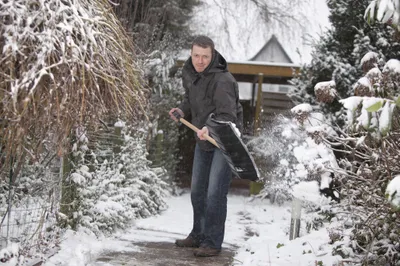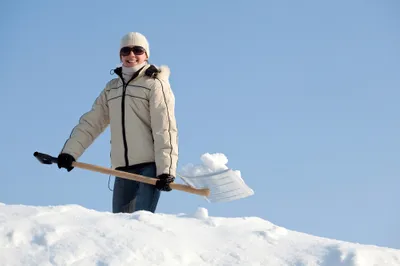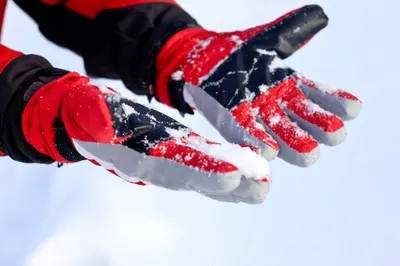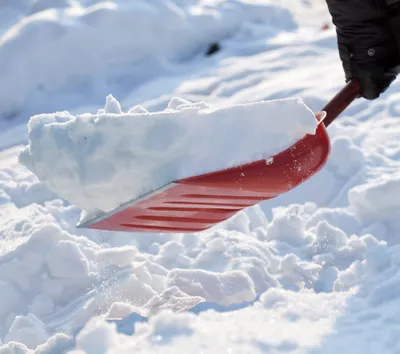Snow is great—if you’re a snowman! But then again snowmen don’t have to shovel when Jack Frost and Mother Nature conspire to drop a big heavy drift of snow on your driveway. How you tackle that mound of winter may leave you with a lengthy injury, severe muscle strain, frostbite, or a heart attack.
That’s why we’re giving you the cold scoop on snow shoveling safety…
1. Prevent a Back Injury
Shovelling a driveway full of wet, heavy snow is extremely physically demanding, particularly if you’re not regularly active as it is. That’s why it’s vital to approach the chore of shoveling yourself out as a workout or a strenuous work task. Shoveling can be hazardous and those with bad backs risk strains, pulls, and misalignments, so do yourself a favor and take it slow, ask for assistance, invest in a snow blower, or wear a back brace and take frequent breaks if you have a history of back issues.
2. Stretch and Warm Up
As mentioned, shoveling a driveway can burn up to 500 calories, more for super long, super wide driveways. And that is considered a workout. So do your body a favor and warm up with some stretches before you begin shoveling. A body full of tight inactive muscles and a cold winter’s day can almost guarantee a muscle pull.
3. Dress Warmly
On cold winter days, being outside for any length of time requires warm, dry, lightweight layers that keep in your body heat, but are still comfortable for shoveling. A pair of thermal underwear under your pants is a wise idea, and an upper layer that wicks away perspiration from the skin’s surface will prevent frostbite or a chill.
4. Protect Extremities From Frostbite
Skin exposed to cold weather is the most prone to frostbite. Typically the extremities—including the ears, nose, fingers, and toes—are most at risk. So wear a warm winter hat that covers your ears, a scarf that shelters your mouth and nose, and mittens that shied your hands and fingers from frostbite. Also, waterproof, winter boots should protect your feet and ankles from wetness and provide traction on slippery surfaces.
5. Invest in a Lightweight Shovel
When you consider the weight of all that snow, a lightweight, but a heavy-duty shovel won’t add to each scoop and put stress on your lower back and hamstrings. Stick with a shovel that is under 3-pounds with a handle long enough so that you don’t have crouch down uncomfortably to get a good grip while shoveling.
6. Lift With Your Legs
Remember, even if you have a strong back, the cold temperatures will increase the risk of a muscle pull. So push with your shovel, don’t lift, and if you do have to scoop and toss snow onto a pile, use your legs and not your back to support the heavy load. Also, avoid a muscle strain by twisting away suddenly from the direction your facing to toss snow over your shoulder.
7. Take Breaks
Clearing a long driveway demands a lot of physical exertion. Something you may not be used to if you don’t exercise regularly. So take it easy on yourself and take breaks when you’re feeling winded or sore. And be sure to go inside for a hot beverage and to warm up if you feel numb to cold.
8. Pace Yourself
After months of inactivity, you wouldn’t run a 5K race without stopping, would you? That might seem ridiculous, but so is a strenuous hour of shoveling a driveway. Basically, each scoop of snow is a weight, and even though you’re eager to get back inside where its warm, you should never risk your health or an injury to get the job done faster.
9. Ask For Assistance
Don’t be shy to ask for help with snow shoveling duties, particularly if you’re older, have an existing heart condition, or aren’t physically fit enough to shovel your own driveway. Ask a family member or offer to pay a neighbor with a snow blower to clear the snow from your stairs, driveway, and front walk.
10. Prevent Slips and Falls
Each year, roughly 120,000 American adults suffer injuries associated with snow and ice removal. The majority of those accidents are slips and falls that could have been avoided with proper footwear with traction, and simply by using an de-icing product on slippery surfaces prior to shovelling.













